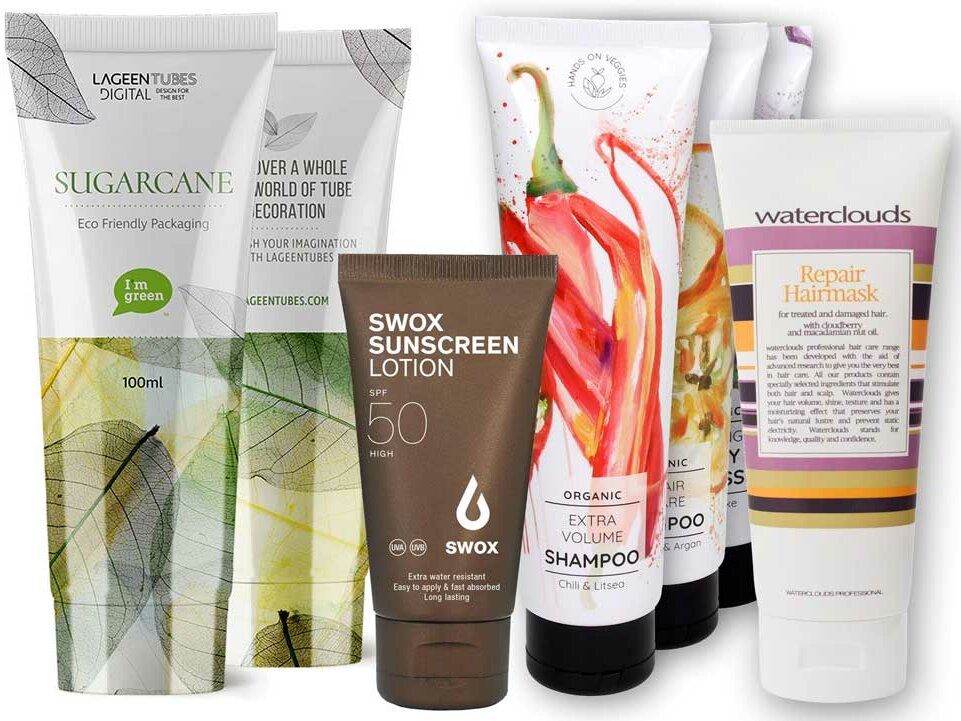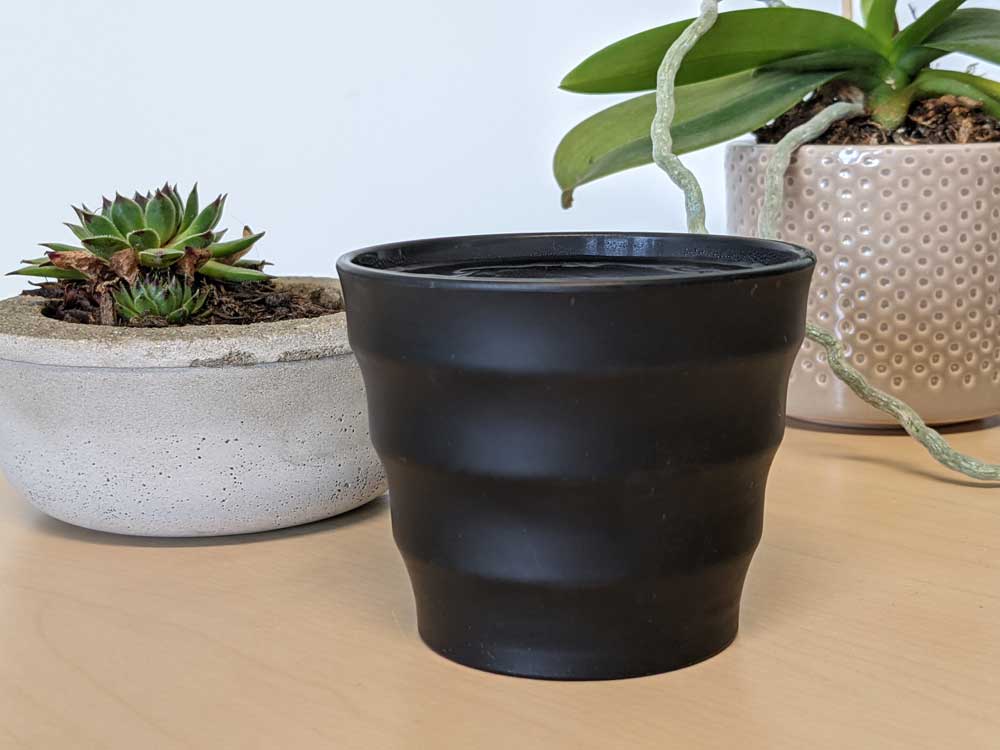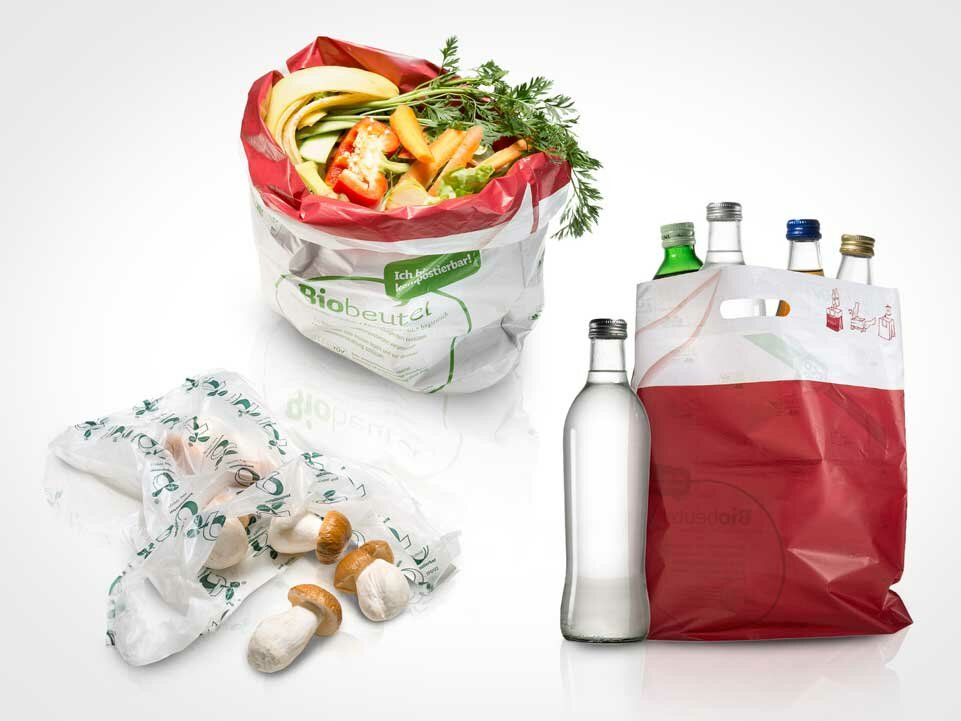Bioplastics - A niche with growing potential
By Katrin Rutt, DLG Mitteilungen
Cardboard drinking straws in restaurants, cloth bags in the supermarket or reusable instead of disposable cups for coffee "to go". In the meantime, we notice in many everyday situations that something is happening on the "plastic front". And it has to! Because every year, several million tonnes of plastic waste still end up in the oceans worldwide - with the well-known negative consequences for the environment and health. For these reasons, many research institutions and companies are pushing the market introduction of innovative and sustainable plastic alternatives made from renewable raw materials. This also brings agriculture into focus. Nevertheless, we are talking about a niche market here for the next few years.
The majority of plastics on the market today are made from petroleum.
However, many metabolic products from plants, trees or algae can also serve as a basis. Modern technological processes make this possible. The most important raw materials for such biopolymers are starch, sugar and cellulose.
At present, though, bioplastics account for only about 1 % of the more than 368 million tonnes of plastics produced worldwide each year. The reasons for the relatively sluggish increase in the production of bioplastics in recent years were mainly low oil prices, slow-onset political support, limitations regarding material properties and difficulties with disposal. But this picture is changing. The development of bio-based plastics is being driven by both industry and policy. The number of major brands opting for bioplastic solutions is growing. The first large-scale products in Europe have already been introduced by well-known brands such as Danone, Puma, Lego, IKEA, Tetra Pak, Heinz or Toyota.
There are hundreds of different types of classic plastics.
The portfolio for biogenic materials, in contrast, is not as diverse. "Nature sets us limits here," says Thomas Büsse from the Fraunhofer Institute for Applied Polymer Research (IAP). Among other things, he is working on the development of various bioplastics with improved properties for use. "Bioplastics are competitive with conventional plastics in various areas. Many material properties such as hardness, elasticity and UV resistance are now comparable. When it comes to properties such as water impermeability or heat resistance, however, bioplastics are still lagging behind," says Büsse. Nevertheless, he is currently preparing a patent for a product that has a similar water vapour permeability as the mass plastic polyethylene (PE).
The market is now dominated by so-called drop-in bioplastics. These are biobased (and partially biobased) standard plastics whose chemical structure is identical to that of conventional plastics (e.g. Bio-PE, Bio-PA or Bio-PET). This makes them a 100 % substitute in processing possible. Moreover, they are produced in large plants in comparatively large quantities, which allows them to keep up with their conventional counterparts in terms of production costs. Yet these bioplastics are not biodegradable.
Degradability and disposal.
Biodegradability does not depend on the raw material, but solely on the chemical structure of the end product. The longevity of plastics in particular has led to them becoming a major problem for humans, animals and the environment. For example, a PET bottle takes over 450 years to decompose to a large extent. And even then it is not completely degraded, but is deposited in the environment in the form of microplastics. "The duration of the decomposition of biodegradable polymers is similar to that of wood and is thus about one to two years," says Thomas Büsse. "At the same time, the actual speed depends on the prevailing conditions such as temperature, oxygen supply and moisture. Or to put it another way: a biodegradable plastic lasts longer in the Sahara than under Central European conditions."
Closely related to degradability is always the discussion about the disposal of bioplastics. You wouldn't expect it, but even biodegradable plastics should not be disposed of on the compost or in the organic waste bin. As nice as the idea is, they decompose much more slowly than an apple leftover and leave ugly traces for a longer time.
For waste management companies, it is not only the slow rotting process that is an obstacle. Bioplastics are also visually indistinguishable from other plastics, which is why they are sorted out in advance by industrial composting plants. On the other hand, biodegradable biopolymers are virtually predestined for short-lived use. This applies, for example, to the use of mulch films in agriculture. They are worked into the soil after the harvest and rot there.
This means that the majority of bioplastics must be disposed of in the yellow bin or residual waste. Drop-in bioplastics are recyclable without restrictions. They can be collected and reprocessed together with their fossil-based counterparts. The new types of non-structural bioplastics can also be recycled. However, since there are only a few products on the market in this segment so far, separate collection and reprocessing is not (yet) economical. Currently, most bioplastic waste ends up in residual waste, which is recycled for energy. Nevertheless, when burned, biobased plastics are more environmentally friendly than conventional plastics. They have a high calorific value and can replace coal and heating oil. And in contrast to the combustion of petroleum-based plastics, no additional CO2 is released.
Not all bioplastics are the same
The term bioplastic is not legally protected. A distinction is made between "biobased" and "biodegradable" plastics. This classification shows the two crucial dimensions of the topic. On the one hand, it is about the raw materials used for production, and on the other hand, it is about the natural degradability of the products.
Biobased plastics are made to a certain extent from renewable raw materials, i.e. biomass (e.g. maize or sugar cane). Biodegradable means that the plastic is biologically degraded by bacteria and enzymes, for example, and in the end only CO2 and water remain. Bio-based plastics can be biodegradable. However, they are often not. Conversely, biodegradable plastics are not necessarily bio-based. When we talk about sustainability, the "supreme discipline" lies in the combination of both: the saving or substitution of fossil raw materials and biodegradability.
Sugar and starch from plants usually serve as biogenic raw materials. These are processed into various polymers. For example, polylactic acid (PLA), polybutylene succinate (PBS) or polyhydroxyalkanoates (PHA). These three groups are both biobased and biodegradable. However, proteins, vegetable oils, lignin or natural rubber are also used.
Currently, the most economically significant biopolymer is PLA, but the share of the more versatile PBS is increasing significantly. According to the Agency for Renewable Resources (FNR), the world's first major PLA production plant with an annual capacity of 150,000 t was commissioned in the USA in 2002. The second largest plant, with a capacity of 75 000 t, started operations in Thailand in 2018. Further industrial PLA plants are planned or under construction.
This raises the question: what about sustainability?
According to studies by the Institute for Bioplastics and Biocomposites at Hanover University of Applied Sciences and Arts (IfBB), the following can be deduced from the life cycle assessment data currently available on biopolymers:
- Biopolymers have advantages in various impact categories (greenhouse gas potential, energy consumption, abiotic resource consumption, etc.).
- However, they also have disadvantages in some impact categories. For example, in the case of eutrophication and acidification potential.
Since the necessary biomass is mainly provided by agriculture, a discussion has also arisen about possible land competition with food production, as is the case with biofuels. But studies by the IfBB show that only about 0.02% of the world's agricultural land is needed for the production of biopolymers. And this share is only expected to increase slightly despite the forecast market growth. Instead, residual and waste materials from agriculture, forestry and food production are increasingly becoming the focus of the substrate discussion. This is also emphasised by Thomas Büsse: "We are currently focusing, for example, on damaged or cut wood as well as waste from the paper industry." The RUBIO project was set up for this purpose. It brings together 20 partners from industry and research and is funded by the Federal Ministry of Education and Research with €12 million. The goal is to produce bioplastics based on polybutylene succinate (PBS) using regionally available cellulosic and lignocellulosic residues and recyclable materials. In order to comply with the holistic materials cycle approach, suitable recycling solutions and strategies for reuse are also to be developed.
Where does the production of bioplastics happen?
According to current forecasts by the industry association European Bioplastics, global production capacities are expected to increase from around 2.11 million tonnes in 2020 to about 2.87 million tonnes in 2025. Asia is leading the way. In 2020, 46 % of bioplastics were produced there, and investments are being made in further plants. Europe now ranks second with 26 % of global bioplastics production. Europe has thus significantly strengthened its position in this market in recent years.
Future outlook for bioplastics
Measured against the overall plastics market, we are still talking about a niche for bioplastics. However, more and more sophisticated biopolymers are being produced, which means that the market is growing and diversifying. In addition, the "green conscience" of the population weighs more and more heavily, fossil raw materials are becoming scarcer and more expensive. And in Brussels, climate and environmental protection are among the very big issues.
"The fact is that bioplastics can reduce CO2 emissions compared to conventional plastics. And they offer two other clear advantages: they are made from renewable raw materials and new, innovative materials are completely biodegradable at the end of their life cycle," says Thomas Büsse of the Fraunhofer Institute for Applied Polymer Research. With increasing quantities, production costs will also be reduced and sensible recycling or recovery infrastructures will be established. Growing plants as direct suppliers of raw materials will, unfortunately, continue to play a secondary role in the future. In line with the sustainability concept, the focus is on the (further) development of bioplastics produced from waste and residual materials.





